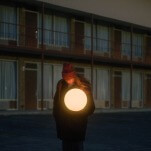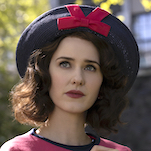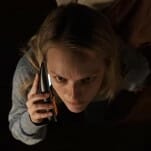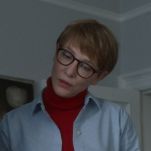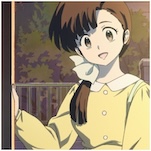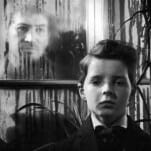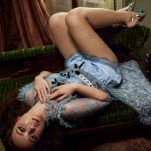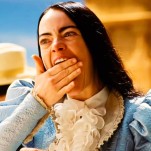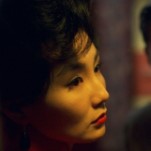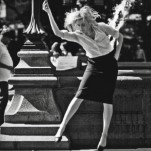Exclusive Excerpt: Paulette Kennedy’s Gothic Historical Novel The Artist of Blackberry Grange
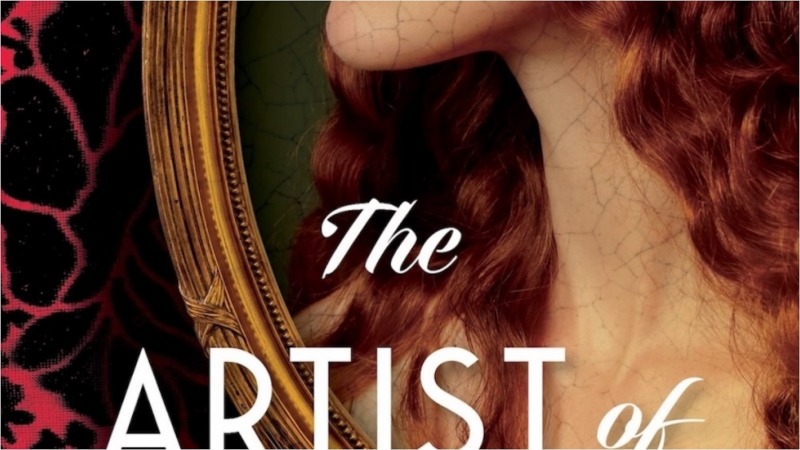
Bestselling suspense author Paulette Kennedy is known for her unforgettable characters, classic gothic elements, and brisk, propulsive mysteries that keep readers turning the pages as quickly as possible. Her latest novel, The Artist of Blackberry Grange, arrives this May and mixes history, romance, surrealism, and a dash of mystery to form a story that explores everything from generational trauma and toxic love to the challenges and rewards of being a caregiver.
Set in the Ozarks in the early 1920s, the story follows a young woman who learns her great-aunt Marguerite, once a renowned artist, needs a live-in companion thanks to the steady progression of her dementia. But when Sadie arrives on the eerily beautiful estate known as Blackberry Grange, she’ll not only uncover family secrets, but ghosts both literal and figurative.
Here’s how the publisher describes the story.
In the summer of 1925, the winds of change are particularly chilling for a young woman whose life has suddenly become unbalanced.
Devastated by her mother’s death and a cruel, broken engagement, Sadie Halloran learns that her great-aunt Marguerite, a renowned artist now in the throes of dementia, needs a live-in companion. Grasping at newfound purpose, Sadie leaves her desolate Kansas City boardinghouse for Blackberry Grange, Marguerite’s once-grand mansion sitting precariously atop an Arkansas bluff. Though Marguerite is a fading shell of the vibrant woman Sadie remembers, Marguerite is feverishly compelled to paint eerie, hallucinatory portraits of old lovers―some cherished, some regretted, and some beastly. All of them haunting.
With each passing night, time itself seems to shift with the shadows at Blackberry Grange. As truth and delusion begin to blur, Sadie must uncover the secrets that hold Marguerite captive to her past before reality―and Marguerite’s life―slips away entirely.
The Artist of Blackberry Grange won’t hit shelves until May 1, but we’ve got an exclusive look at the story for you right now.

Marguerite leads me upstairs, to a snug, closed-off room—no larger than a dressing room. I imagine its original purpose was to be a nursery or the housekeeper’s quarters, situated as it is at the end of the second-floor hall, near the interior stairwell. Every surface is littered with artistic detritus. In the gloom, I can make out the shadowed forms of several easels, some standing, some stacked against the walls. Marguerite goes to the only window and draws open the heavy velvet curtains, letting in a blinding blade of sunlight. Dust flies, sending me into a brief coughing fit.
“I haven’t been in here for over a year,” she says. “This used to be my studio. Did you know Vermeer painted with light from a single high window just like this? It’s how he got those marvelous deep shadows and catchlights in the eyes.” She points to one of the easels. “That’s her. Over there, I believe. Christine.”
I wend my way across the cluttered floor to the painting and remove the canvas cover. It’s a portrait of a woman—one in her middling years and regal, with a saucy tilt to her chin as she reclines on the sand in an old-fashioned bathing costume. She has a large striped parasol anchored on her shoulder, shielding her from the sun. As I study the painting, a feeling of vertigo washes over me. The energy in the room shifts, and I can almost hear the sea in my ears, waves softly breaking over sand. Then suddenly, the woman moves. Her elbow lifts, ever so slightly, and the parasol spins. I step back from the painting with a gasp.
“She . . . she moved.”
Marguerite comes to my side. “What did you say?”
“That lady. Christine. She moved.”
Marguerite laughs. “Are you sure you didn’t add some tipple to your tea, my dear?”
“No. I’m certain she moved.” I step back to the painting, drawing Marguerite with me by the hand. “Look.”
But nothing happens. There’s only paint on canvas, artfully applied. Marguerite reaches out, tenderly stroking the line of Christine’s jaw with her fingertip. “She was my last love. I didn’t know that, at the time. I had other affairs after her, of course. But none like Chris.”
“Just how many lovers have you had, Auntie?”
“I’ve had my share of flings, my dear, but I’ve only had three true loves.”
I almost laugh. “That many?”
“What? Do you believe true love to be a once-in-a-lifetime thing? That’s only the case in fairy tales.” Her voice falls, growing solemn. “Something you realize, when you’re older, is that you can and will fall in love more than once, and every lover you have teaches you something. About the world. About yourself. The lessons aren’t always pleasant. Or easy. And you won’t always understand why things happened the way they did, until much, much later.” She turns back to the painting and sighs. “It didn’t end well for us. Christine wanted more than I was able to give. She begged me to give up my home here, move to France. But I still cared too much about what people would think. What my family would say. If I’d gone to live with her, it would prove the rumors about me true. Your grandmother Florence already suspected and judged me for it.”
I remember the letter from Marguerite that my grandmother read scornfully and discarded, all those years ago. “I think you’re probably right. About Grandmother.”
“Bitter as the day is long, that one.” Marguerite shakes her head. “She punished me for her unhappiness. With Florence gone, I can finally be who I am, but I wish things had been different between us. She was difficult. Domineering. But I secretly ached for her approval. I wish we could have found a way to make peace with one another.”
“She loved you. She did,” I say gently. “She told me such fond stories of your childhood together. About Claire, too.” It’s a bit of a lie—Grandmother had very few kind words in her repertoire about either one of her sisters, but rehashing their differences won’t soothe Marguerite’s regret.
“Claire . . .” Marguerite looks down. “Now there’s a name I haven’t heard in years. How did you know Claire?”
“She was my great-aunt, just like you are. I never met her, though.”
“That’s right. I remember now. You’re Sybil, aren’t you? Or is it Susan?” Marguerite shakes her head in confusion. “No, that’s not right.”
It’s stunning how quickly Marguerite’s recollection of who I am fades. I take her hand. “Sadie. I’m Sadie.”
“Yes. Sadie. I like that name. It’s a bit feisty.”
I laugh. “It suits me, I think.”
Marguerite covers the portrait of Christine, and motions to another easel. “I believe that’s my portrait of Hugh, over there. I still need to finish it. I found it the most difficult to paint . . . my emotions got the better of me. Hugh was my first love. Things ended tragically for us. I don’t like to think about him too often. It makes me sad.” She moves to the painting and pulls away the drop cloth. My eyes widen. It’s the man I saw in the attic. The stranger. I recognize him immediately—his crisp jawline and that tumbling, dark hair falling over his brow. A face so handsome it’s almost cruel.
“How?” Marguerite’s voice drops so low I can barely hear the words. “I burned this one. I’m sure I did.”
“Is that Hugh?”
“No,” Aunt Marguerite says, her voice quaking. “Not Hugh. My Hugh was good.”
“Who’s this man in the painting, then?”
“My biggest regret.” She crumples in on herself, hiding her eyes with her hand. “Cover it, please, Sybil. Cover it up.”
I pick up the drop cloth and throw it back over the painting. As I do, I swear I see the faintest smile lift the corner of the man’s mouth.
In the wee hours, after the house quiets and Marguerite falls soundly asleep, I decide to go back to the studio. I can’t resist. The mysterious portrait calls to me. Who was that nameless man? Who was he to my aunt? If he was one of her lovers, their affair seems to have ended badly. And if he’s a real person from the past, that means I’ve seen him—or his ghost—a troubling thought that chases me as I light an oil lamp and pad down the hall.
In her state of distress earlier, Marguerite forgot to lock the studio door. I slowly turn the knob and push it open, the hinges creaking faintly. The curtains are still open, and outside, the trees sway in the indigo darkness. The air, even inside the house, is thick with the promise of rain. My lamp casts eerie shadows over the walls and shrouded easels as I set it on a small table near the man’s portrait. I stand there for a moment, staring at the veiled painting, a tremor of anxiety at one with my curiosity as I remember the way his lips tilted in that insolent half smile. It might have been my imagination. But the same thing happened with Christine’s portrait. Iris’s as well. Each figure moved. There’s something uncanny about my aunt’s work. Otherworldly.
The hall clock chimes twice, startling me.
“Oh, Sadie, stop being ridiculous.” I take a half step forward and gently pull on the dust cover. It falls away. The man stares out at me, his eyes dark with something dangerously close to desire. My head goes woozy as I study him. He sits in a wooden chair, one arm propped on the back, the light etching his face with shadow and carving away any softness. He’s dressed simply, in a white shirt unbuttoned below the collarbone and black trousers with no jacket.
I step closer, my eyes roving over the surface of the painting as I examine Marguerite’s brushwork. There’s a difference compared to the other two portraits—her brushstrokes are more primitive, as if she made this painting when she was much younger, her talent nascent and still emerging. The swirls of paint are hypnotic, undulating across the canvas.
The wobbly sensation returns, my head spinning. I suddenly feel faint. I reach for something, anything, to steady myself as the edges of my vision begin to blacken. Before I can lower myself to my knees, the floor tilts at an odd angle, a strange, whining roar floods my ears, and I’m falling, the darkness reaching out to embrace me.
Interlude
Weston
Sadie sits up, her eyes wide as she stumbles to her feet and looks about. Confused thoughts knit together in a disarrayed tangle. Just a moment ago she was in Marguerite’s studio . . . but she’s somewhere quite different now. The room is lushly appointed, with high ceilings, wood-paneled walls, and velvet draperies. A billiards table sits at its center, brightly colored balls scattered over the red felt. It’s a room familiar and unfamiliar to her all at once . . . some memory she can’t quite pin down flits through her mind like an errant moth. She hears the distant tinkle of cutlery on china—a woman’s high, spindle-sharp laughter. She presses her ear to the door, listens to the low hum of conversation in the next room.
A man’s voice comes from behind her. “We can go in if you’d like. They won’t be able to see you.” Sadie startles, whirls to face the corner. She hadn’t noticed him sitting there, hidden in the shadows. A sinuous trail of smoke threads toward her. She looks down at her silk wrapper, the color rising in her cheeks as she tightens the belt, pulls at the short hem. “What happened? Where am I?”
“Kansas City, Missouri. 1875.” The man takes a drag from his cigar and leans forward, into the frail light from the hissing oil sconce. It’s the stranger she saw in the attic. The man from Marguerite’s painting.
“But . . .” Sadie shakes her head, puts a hand to her forehead, as if checking for a fever. “I don’t understand. Am I dreaming?”
“No, not exactly. I’ll explain everything in time.” The man unfolds from the chair, stubs out the cigar.
“You’re him, aren’t you? The man from the painting.”
“Yes. I am.” He closes the distance between them, covering Sadie with his gaze. “Weston Chase. We met the other day, but you were in a bit of a hurry I regret we didn’t have time for introductions.”
“I was looking for Marguerite. You told me about the tower room. I saw you . . .” She shakes her head. “Are you real?”
“As real as I can be. I’m sorry, I don’t believe I caught your name.”
“Sadie. Sadie Halloran. I know where I am now,” she says excitedly. “This is my aunt Grace’s house in Brookside. There, that mantel. I had too much wine at a party here last year, and I hit my head. I needed stitches.” Another peal of laughter rings from the dining room, this one familiar. Sadie turns at the sound, a soft gasp escaping her lips. “Is that my grandmother?”
“Yes. That’s Florence. Would you like to go in now?”
“But won’t we interrupt them?”
The man smiles with the slightest air of condescension. “As I said, they can’t see you. You’ll be like a ghost. They might feel a slight draft when you pass by. That’s all.”
Sadie reaches for the doorknob, all eagerness now, but her hand passes through it, her flesh as insubstantial as air.
The man chuckles softly. “Allow me.” He swings open the door, and five heads swivel toward them at once. Weston lightly touches her back, urging her forward. Sadie slips through ahead of him, her eyes widening as she takes in the candlelit table, with its fine linens, crystal, and abundance of food. Her great-grandparents sit at either end— though she never met them, she recognizes them from their portraits. Bram and Adeline Thorne. Their three daughters, Florence, Claire, and Marguerite, are all there, too, dressed in dinner finery. The scene is a glittering palette of Gilded Age wealth. Sadie slinks to the wall, where she watches, taking everything in with awestruck attention.
“Weston, we were wondering where you’d gone off to,” her great-grandfather says, motioning for a footman. “More wine, if you please.”
“Pardon my poor manners, sir. I fancied a smoke and didn’t want to offend the ladies.” Weston takes his seat next to Florence, who turns to him with flushed cheeks and a winsome smile.
Bram waves away the apology. “How’s the writing coming along?”
“Very well,” Weston says. “I’ve the first five chapters complete.”
“Good, good.” Bram smiles beneath his impressive mustache. “Florence writes, you know. You should look at her work sometime, see if it has any merit.”
“Papa,” Florence says, shaking her head. “They’re only silly stories. I’m sure Mr. Chase has more important things to do.” Sadie watches Weston’s eyes rove over Florence, taking in her youthful beauty. She looks so much like her granddaughter Louise, the candlelight suffusing her complexion with a lambent glow.
Marguerite’s fork clangs loudly against her plate. Her green eyes are daggers, pointed at Florence. “Stop it.”
“Marguerite!” Adeline scolds. “Qu’est-ce qui se passe?”
“Look at her,” Marguerite says, her voice rising. “She’s ridiculous. Surely you can see it, Claire.”
Claire looks down at her plate, tracing a path through the cream sauce with her fork. “Marg, please . . .”
“You’re all blind to it. Every last one of you.” Marguerite stands, throwing her napkin down. “Well. I’ve had enough. I’m going to my room. I’ve lost my stomach.”
Bram lifts a brow and sighs. “Very well, miss. As you’re so fond of your room, you’ll be spending the rest of the week there.”
“Good.” Marguerite stalks from the table, her bustled skirts swishing as she passes by Sadie, so close that Sadie can smell her lilac perfume. Her great-aunt pauses for the slightest moment, as if sensing her, then rustles on, the echo of her feet on the stairs fading into the distance. No one says anything in her wake, although Claire begins to cry, silent tears tracking down her angelic face.
“I apologize, Mr. Chase,” Adeline finally says. “Marguerite is, how do you say . . . une rebelle.”
Weston laughs. “I find all of your daughters to be quite charming, Mrs. Thorne.”
“When are you going to take her in hand, Papa?” Florence says, fuming, her eyes now pinched and hateful, the expression ruining her delicate, pretty features. “She’s jealous. That’s what this is about. She’s always been jealous of me.”
“Florence, please.” Bram passes a hand through his thinning hair. “Let’s have our dessert in peace, shall we? I’m weary of all the bickering.”
Weston glances over at Sadie as the footmen begin serving a decadent rum-and-cherry compote alongside fluted canelés de Bordeaux—a dessert her grandmother always favored. Florence lifts the spoon to her lips with a smile as Weston whispers something in her ear.
The scene shifts suddenly, as if a strip of film has been cut and spliced. Somehow, Sadie is now outside, the scent of summer jasmine heavy in the air. While the change in scenery is jarring to her senses, she recognizes this place, too—these gardens. She played in them as a child and once got lost in the boxwood labyrinth when she was small. The marble statues of gods and goddesses always frightened her. Now, up ahead, the cloistered walls of the labyrinth beckon, faintly edged in shadow. As Sadie nears the maze, she hears a soft giggle, then a muted male voice. She pauses, listening.
“There,” he murmurs. “I’ll help you up. But you must be quieter this time.”
Sadie edges closer to the first open-air room of the labyrinth—a temple dedicated to Venus. A frisson of nervous dread wars with her curiosity. Somehow, she already knows what she’ll see. The thought makes her stomach turn. Yet her feet move forward of their own volition.
“Weston . . .” Florence’s voice, soft and pleading with want.
“Quiet now, or I’ll stop.”
Sadie rounds the corner of the hedge and gasps. Florence sits balanced on the altar at Venus’s feet, her hair loose and her head tilted back as Weston pleasures her, the moon bathing her bare shoulders in silver light.
Excerpt from THE ARTIST OF BLACKBERRY GRANGE by Paulette Kennedy
Text copyright © 2025 by Paulette Kennedy, Published by Lake Union
The Artist of Blackberry Grange will be released on May 1, but you can pre-order it right now.
Lacy Baugher Milas is the Books Editor at Paste Magazine, but loves nerding out about all sorts of pop culture. You can find her on Twitter and Bluesky at @LacyMB




